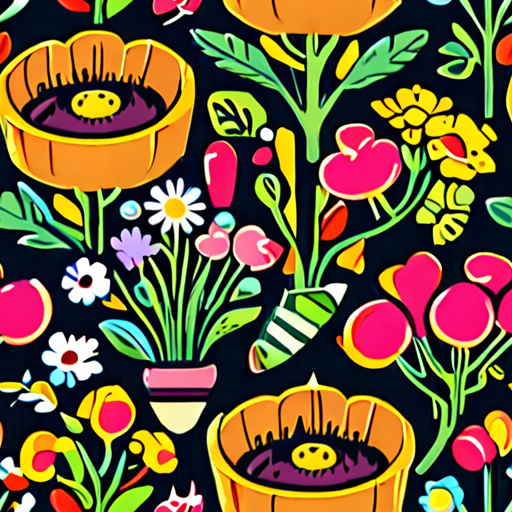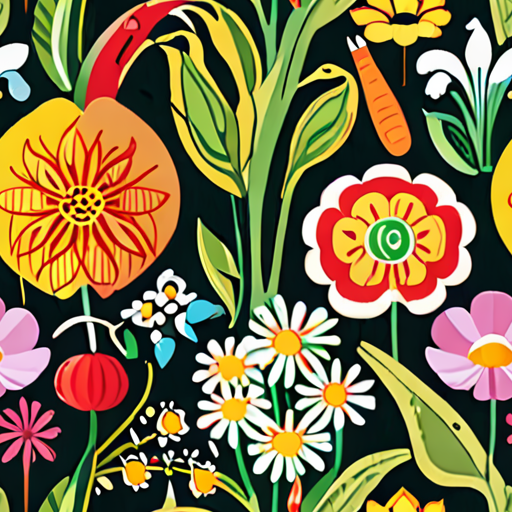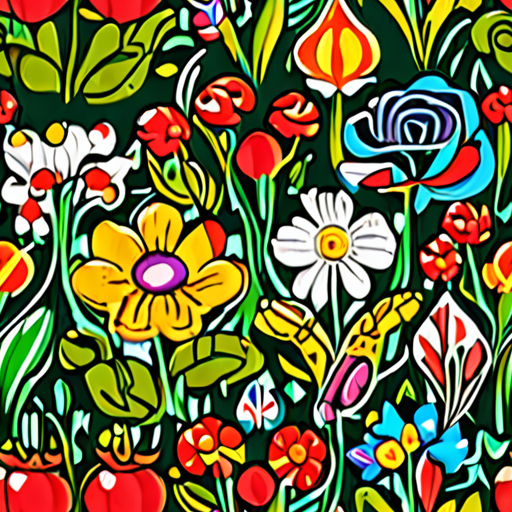As we navigate the complexities of modern agriculture, it has become increasingly clear that seed diversity plays a vital role in ensuring food security and sustainability. With the global population projected to reach 9 billion by 2050, the need for diverse and resilient crops has never been more pressing. However, the impact of climate change, monoculture farming practices, and limited access to equitable seed distribution threaten the very foundation of our food systems. In this article, we will explore the importance of seed diversity, its significance in agriculture, and the strategies being implemented to preserve and promote this critical resource.
Why Seed Diversity is Crucial
As a gardener, I understand the importance of having a diverse selection of seeds to plant in my garden.
- One reason seed diversity is crucial is that it allows crops to adapt to changing environmental conditions.
- When we have a variety of seeds, our crops are better equipped to handle unexpected weather patterns, diseases, and pests.
- This is because different varieties of seeds have unique characteristics that enable them to thrive in various conditions.
For example, some seeds may be resistant to certain diseases, while others may be more tolerant of drought or extreme temperatures.
The Benefits of Seed Diversity
By planting a diverse array of seeds, we can enjoy several benefits, including:
- Increased crop yields
- Improved nutritional value
- Enhanced flavor and texture
- Better resistance to disease and pests
In addition to these benefits, seed diversity also helps to preserve genetic material and promote biodiversity.
Preserving Genetic Material
When we save seeds from a diverse range of crops, we are preserving the genetic material that makes those crops unique.
This is particularly important for heirloom varieties, which are often lost as commercial farmers opt for more uniform, high-yielding crops.
Supporting Biodiversity
By growing a diverse array of crops, we are supporting biodiversity and helping to maintain the health of our ecosystems.
This is because diverse crops attract a wider range of pollinators, beneficial insects, and other wildlife that play critical roles in maintaining ecosystem balance.
Getting Started with Seed Diversity
If you’re interested in incorporating seed diversity into your gardening routine, here are a few tips to get you started:
- Start by selecting a variety of seeds that are well-suited to your climate and soil type.
- Experiment with different growing techniques, such as companion planting and crop rotation.
- Consider joining a seed-saving community or online forum to connect with other gardeners who share your interests.
By embracing seed diversity, we can create healthier, more resilient gardens that benefit both ourselves and the environment.
Seed Biodiversity and Human Survival
As an advocate for sustainable agriculture and heirloom gardening, I firmly believe that seed biodiversity plays a crucial role in ensuring human survival.
- Maintaining the genetic diversity of wild species related to domesticated species guarantees our continued food supply.
- The loss of crop diversity can lead to reduced yields, decreased nutritional value, and increased vulnerability to pests and diseases.
- Government agriculture departments have been maintaining seed banks of crop varieties since the 1920s to preserve crop diversity.
At Old Seed , we promote heirloom gardening and sustainable agriculture practices to preserve seed biodiversity and promote environmental stewardship.
- We offer guides, tips, and inspiration for eco-conscious gardeners and farming enthusiasts to adopt environmentally friendly gardening techniques and keep agricultural traditions alive.
- Our mission is to cultivate a greener future by preserving heirloom seeds and promoting sustainable agriculture practices.
- We collaborate with other organizations, such as Seed Library and Heirloom Gardener , to advance our shared goals of preserving seed biodiversity and promoting sustainable agriculture.
By prioritizing seed biodiversity, we can ensure a resilient and sustainable food system that benefits both humans and the environment.
The Benefits of Seed Biodiversity
- Increased crop resilience to pests and diseases
- Improved nutritional value and flavor
- Reduced reliance on chemical pesticides and fertilizers
- Preservation of traditional agricultural knowledge and practices
Getting Involved
You can contribute to seed biodiversity efforts by:
- Saving and sharing heirloom seeds with others
- Supporting local farmers who use sustainable agriculture practices
- Advocating for policies that promote seed biodiversity and sustainable agriculture
- Learning more about heirloom gardening and sustainable agriculture through online resources and workshops
Why Diversity Matters in Agricultural Crops
Diversity plays a crucial role in agricultural crops, and it’s essential to understand its significance.
- Agronomic Benefits
- Pest Management: Crop diversification helps break insect and disease cycles, reducing the need for pesticides and minimizing environmental impact.
- Weed Control: By growing multiple crops together, farmers can reduce weed growth and minimize herbicide usage.
- Soil Erosion Prevention: Diverse crop rotations help prevent soil erosion, preserving soil health and fertility.
- Soil Moisture Conservation: Different crops have varying water requirements, allowing farmers to optimize irrigation and conserve water.
- Nutritional Value
- Variety of Food Options: Crop diversity ensures a wider range of nutritious food options for humans and livestock, promoting healthy diets and reducing reliance on a few staple crops.
- Better Nutrient Profiles: Diverse crops often have unique nutrient profiles, providing a broader spectrum of vitamins, minerals, and antioxidants.
- Economic Benefits
- Increased Crop Yields: Crop rotation and diversification can lead to increased yields, improved crop resilience, and reduced crop losses due to pests and diseases.
- Market Opportunities: Growing diverse crops can open up new market opportunities, enabling farmers to tap into niche markets and increase revenue.
- Sustainability
- Reduced Environmental Impact: Crop diversification promotes sustainable agriculture practices, minimizing the environmental footprint of farming operations.
- Improved Biodiversity: By growing a variety of crops, farmers contribute to preserving biodiversity, supporting ecosystem services, and maintaining ecological balance.
Crop diversity is essential for achieving sustainable agriculture goals, ensuring food security, and promoting environmental stewardship.
Why Seed Distribution is Crucial
As an heirloom gardener and advocate for sustainable agriculture, I understand the significance of seed distribution in ensuring the continuation of our planet’s biodiversity.
- Ensuring Plant Reproduction
- Without effective seed dispersal, many plant species would struggle to reproduce, leading to a decline in genetic diversity and potentially even extinction.
- This is particularly concerning for heirloom varieties, which rely on human intervention to propagate and preserve their unique characteristics.
- Driving Succession Patterns and Regeneration
- This process helps maintain ecosystem balance and promotes the growth of diverse plant communities.
- In turn, this supports a wide range of wildlife, from pollinators to herbivores, which depend on these ecosystems for survival.
- Shaping Plant Spatial-Genetic Structure
- This, in turn, impacts the long-term viability and resilience of plant populations, making them better equipped to respond to environmental challenges.
- By preserving genetic diversity through effective seed distribution, we can safeguard the health and adaptability of plant populations for generations to come.
- Sustainable Agriculture and Heirloom Preservation
- By supporting local seed banks and participating in seed exchange programs, gardeners can contribute to the conservation of rare and endangered plant species.
- This approach also fosters community engagement and education, raising awareness about the importance of seed distribution and its impact on our environment.
Seed dispersal plays a vital role in plant reproduction, allowing species to spread and adapt to changing environments.
Seed dispersal influences succession patterns, enabling plants to colonize new areas and regenerate in disturbed ecosystems.
Seed dispersal affects the spatial-genetic structure of plant populations, influencing gene flow and genetic diversity.
Seed distribution is essential for promoting sustainable agriculture and preserving heirloom varieties.
At Old Seed , we recognize the critical role seed distribution plays in maintaining ecological balance and promoting sustainable agriculture.
We encourage gardeners and farmers to join us in our efforts to preserve heirloom varieties and promote responsible seed distribution practices.
How Does Seed Dispersal Contribute to the Diversity of Plant Life on Earth?
Seed dispersal plays a vital role in maintaining the health and diversity of plant life on our planet.
- By allowing seeds to travel to new locations, seed dispersal enables plants to colonize new areas, reducing competition for resources and increasing genetic diversity.
- Seed dispersal also helps to prevent the spread of diseases and pests, which can decimate plant populations and reduce biodiversity.
- In addition, seed dispersal facilitates the adaptation of plants to changing environmental conditions, such as climate change and shifting soil chemistry.
The Importance of Seed Dispersal Mechanisms
There are several key mechanisms of seed dispersal, including:
- Wind dispersal: Many plants rely on wind to disperse their seeds, often using adaptations such as feathery plumes or winged seeds to aid in transportation.
- Water dispersal: Some plants, such as mangroves and lotus, rely on water to disperse their seeds, often using buoyant fruits or seeds to facilitate transport.
- Animal dispersal: Animals play a crucial role in seed dispersal, often consuming fruit or seeds and then depositing them in new locations through their droppings.
- Human dispersal: Humans have also played a significant role in seed dispersal, often intentionally or unintentionally transporting seeds to new locations through trade, travel, and agriculture.
The Impact of Seed Dispersal on Ecosystem Health
Seed dispersal has a profound impact on ecosystem health, influencing everything from plant community composition to nutrient cycling and soil formation.
- By facilitating the colonization of new areas, seed dispersal promotes the establishment of diverse plant communities, which in turn support a wide range of wildlife and ecosystem processes.
- Seed dispersal also influences nutrient cycling, as seeds and seedlings require specific nutrients to germinate and grow.
- Finally, seed dispersal affects soil formation, as seeds and seedlings contribute to the development of soil structure and fertility.
Conservation Implications of Seed Dispersal
Understanding the importance of seed dispersal has significant implications for conservation efforts.
- By protecting and restoring seed dispersal corridors, we can promote the movement of seeds and seedlings between habitats, supporting the long-term health and resilience of plant populations.
- Seed dispersal also informs our understanding of plant migration patterns, which is critical for predicting how plants will respond to climate change and other environmental stressors.
- Finally, seed dispersal highlights the need for sustainable land-use practices, such as agroforestry and permaculture, which prioritize the maintenance of ecosystem services and biodiversity.
What is the Purpose of Seed Stratification?
As an avid gardener and advocate for sustainable agriculture, I’ve learned that seed stratification is a crucial step in preparing seeds for optimal growth.
- Seed stratification involves simulating natural conditions that seeds would experience in the soil overwinter, helping to break dormancy and initiate the germination process.
- This process can be particularly beneficial for seeds that require cold temperatures to germinate, such as those found in temperate climates.
The Benefits of Seed Stratification
By incorporating seed stratification into my gardening routine, I’ve noticed several benefits:
- Improved germination rates: By mimicking the natural conditions that seeds would experience in the wild, I’ve seen a significant increase in successful germinations.
- Increased seed viability: Seed stratification helps to break down seed dormancy, allowing for healthier and more robust seedlings to emerge.
- Reduced transplant shock: Seeds that have undergone stratification tend to adapt better to their new environment, reducing the risk of transplant shock and increasing overall plant health.
How to Perform Seed Stratification
Performing seed stratification is relatively simple and requires minimal equipment:
- Choose the right container: Select a container that allows for adequate moisture retention and air circulation, such as a plastic bag or a specialized seed starting tray.
- Prepare the seeds: Clean and dry the seeds before placing them in the container.
- Simulate winter conditions: Place the container in a refrigerator or a cool, dark location to mimic the natural conditions that seeds would experience during winter.
- Monitor progress: Check on the seeds regularly to ensure they’re receiving the right amount of moisture and light.
Conclusion
Seed stratification is a valuable technique for gardeners and farmers looking to optimize seed germination and plant growth. By understanding the benefits and implementing this process correctly, we can take our gardening and agricultural endeavors to the next level. Whether you’re a seasoned pro or just starting out, incorporating seed stratification into your routine is sure to yield impressive results.





0 Comments